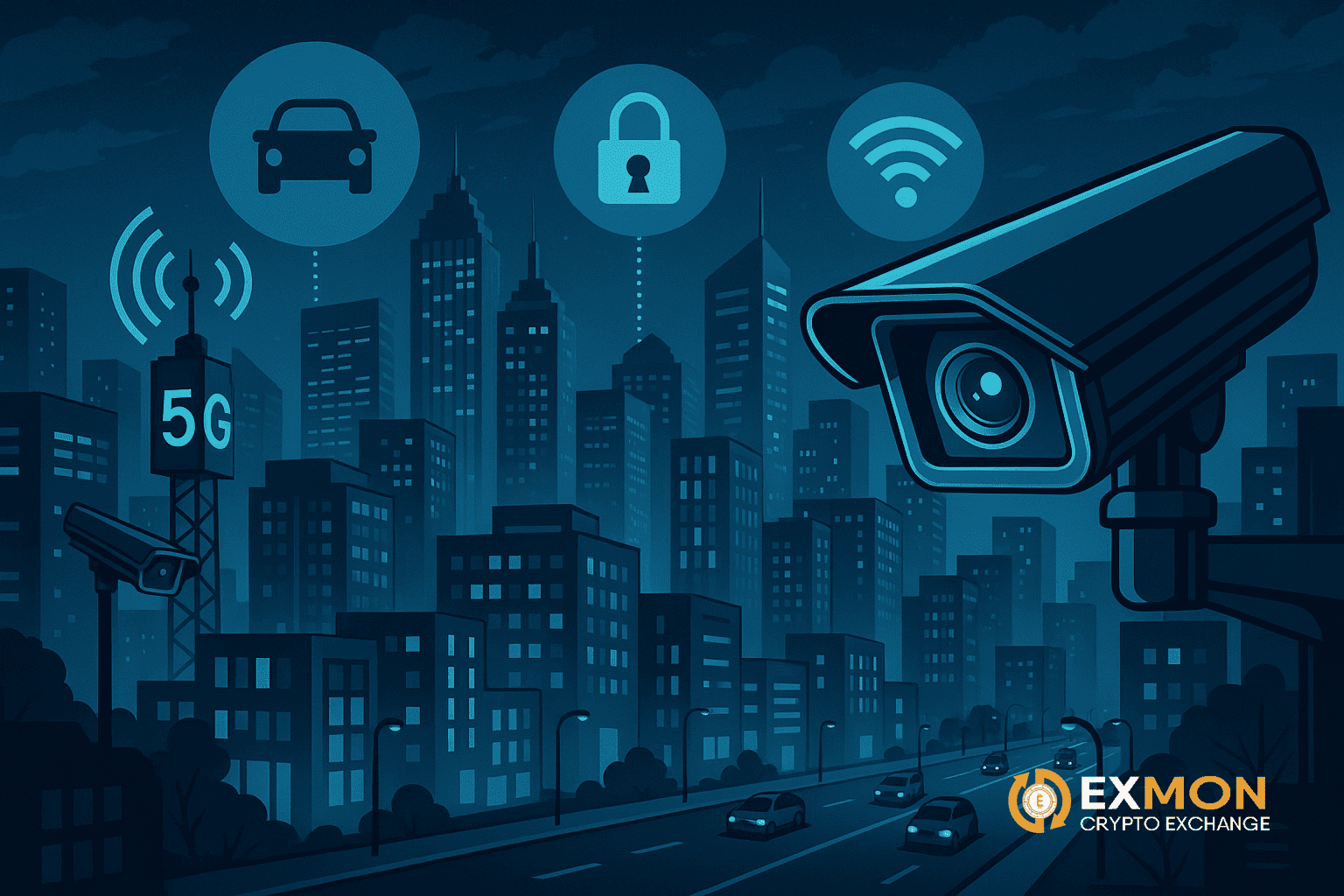Over the past decade, the idea of “smart cities” has been promoted as a utopian upgrade to urban life — promising cleaner streets, faster commutes, energy efficiency, and “citizen-centric services.” Governments and tech corporations alike describe this vision with terms like innovation, sustainability, and public safety. But beneath the buzzwords lies a darker, verifiable truth: the infrastructure behind smart cities is being engineered not for public benefit, but for control.
This isn’t speculation. It’s fact, backed by government documents, whistleblower leaks, and the architecture of the systems themselves.
5G: Not Just Speed — Precision-Tracking at Scale
5G technology — often sold to the public as a revolution in download speeds — is primarily a surveillance enabler.
Unlike 4G, which relies on large cell towers spaced miles apart, 5G requires densely packed small cells, placed every few hundred meters. This blanket of ultra-low latency infrastructure allows:
- Real-time geolocation tracking down to a few feet — vastly more precise than GPS.
- Persistent device mapping, even inside buildings or moving vehicles.
- Mass connectivity of IoT devices (estimated 25–30 billion devices online by 2030, according to Statista).
In 2019, The Guardian reported on leaked Huawei documents showing how smart city platforms were being marketed for "public security" — including real-time tracking of individuals, behavior profiling, and mass facial recognition grids.
Cameras + AI = Automated Surveillance Grids
Many cities now install high-definition CCTV cameras on every street corner — often under the guise of crime prevention or traffic control.
In reality, facial recognition algorithms are now embedded into many of these camera systems. As reported by the MIT Technology Review in 2021, over 75 countries have adopted AI surveillance, and at least 56 nations deploy facial recognition systems on a national or municipal scale.
- In the U.K., the London Metropolitan Police now runs real-time facial recognition (RTFR) with live flagging of "persons of interest."
- In China, the “Skynet” and “Sharp Eyes” programs link tens of millions of cameras to AI systems, creating full-spectrum monitoring of citizens’ movements.
- The U.S. Department of Homeland Security has contracts with companies like Palantir and Clearview AI for integrated facial recognition and predictive policing systems — already piloted in cities like Chicago and Los Angeles.
The data collected isn’t ephemeral. It feeds massive databases — often proprietary — where behavior, location, and identity are logged indefinitely.
The Internet of Things (IoT): You Are the Product
Smart thermostats, voice assistants, doorbells, fridges, and even lightbulbs — every device marketed as “smart” is in fact a node in a mass surveillance mesh.
In 2016, the Director of National Intelligence (DNI) publicly stated that the intelligence community “might use the Internet of Things for identification, surveillance, monitoring, location tracking, and targeting for recruitment or gain.”
What makes IoT uniquely dangerous:
- Always-on microphones (Alexa, Google Home, Siri) with cloud logging.
- Default permissions to share telemetry with third parties (often buried in user agreements).
- Data correlation across devices to build behavior maps.
A 2022 study from Northeastern University found that 72 of the most popular IoT devices routinely send data to third parties, often encrypted and routed through overseas servers — without user knowledge or consent.
Behavioral Monitoring: Predict and Control
With all this infrastructure in place, the next phase isn’t just watching — it’s prediction and influence.
- Predictive policing systems (like PredPol) use surveillance data to anticipate where crimes might occur — often reinforcing racial and class biases.
- Sentiment analysis on public feeds (e.g., Twitter, CCTV, audio capture) is used to track public dissent in real time.
- Digital twins of cities are being created — full simulations of human behavior and infrastructure that can be used to test policy enforcement and social engineering scenarios.
These are not theories. In 2021, the city of Singapore publicly admitted it used wearable devices for COVID tracking that later became tools for law enforcement — a direct violation of public trust.
Who Controls the Data? Not You.
The deeper problem is centralization.
Data from smart city infrastructure is almost never publicly owned. It is:
- Collected by private contractors (like Cisco, Huawei, Palantir, IBM).
- Stored in proprietary clouds.
- Subject to secretive agreements between municipalities and vendors.
Public access is minimal. Consent is nonexistent.
The Electronic Frontier Foundation (EFF) has repeatedly warned that “smart city data governance is being quietly privatized,” with no democratic oversight or legal framework.
Convenience Is the Bait — Control Is the Hook
The smart city dream is a well-marketed trap. You’re not just being tracked. You’re being profiled, modeled, predicted, and nudged.
The future of smart cities — unless challenged — will resemble:
- Programmable central bank currencies (CBDCs) with spending restrictions.
- Real-time social scores impacting housing, transport, jobs.
- Geo-fencing of protestors and dissidents.
- Automated law enforcement with no human accountability.
These are not exaggerations. These are piloted, patented, and prototyped systems, already deployed in parts of the world.
What Can Be Done?
- Demand transparency: Know what your city has signed with vendors.
- Fight biometric surveillance: Support bans on facial recognition tech (as done in some U.S. cities).
- Use open-source tools: Avoid IoT devices that can’t be locally managed.
- Push for data sovereignty laws: Citizens must own and control the data generated about them.
Smart cities aren’t inherently evil. But in their current form, they are built not for citizens, but for administrators, corporations, and law enforcement.
If you don't control the infrastructure — the infrastructure controls you.



